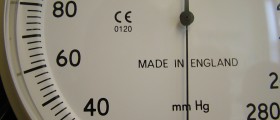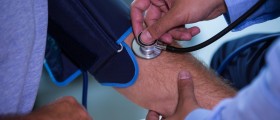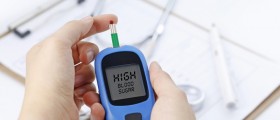
Clonidine is a medication used fortreating conditions such as hypertension, aches and pains, ADHD andanxiety disorders. Basically, it is a drug which belongs to thegroup of direct acting, alpha-2 agonists.
Among all the uses that are proper forthis drug, it is most commonly involved in the treatment of highblood pressure.
Clonidine in High Blood PressureTreatment
This medication has first been used forthe treatment of hypertension in the 1950s. However, after this,initial use, it was discovered to be effective for some otherpurposes as well, including neuropathic pain, opioid detoxification,sleep hyperhydrosis and as a anesthetic drug for animals.
Some other uses of this medicationwhich are approved by the FDA are in ADHD treatments, insomnia andfor alleviation of the symptoms related to menopause.
By stimulating alpha-2 receptors in thebrain, clonidine decreases the cardiac output and, thereby, reducesthe resistance of the peripheral vascular areas. Subsequently, itreduces one's blood pressure. Also, this drug is known to decreasepresynaptic calcium levels and norepinephrine levels.
Apart from being available in the formof pills, clonidine can also be obtained as patches which are placedonto the skin in order to help a person reduce his/her bloodpressure. This form of treatment is commonly combined with some otherdrugs for treating hypertension.
Either way, in order to benefit fromthis medication, regardless of its form, you are advised to followthe instructions for its usage thoroughly. Also, you are best toinform your doctor about your medical history before taking clonidinefor any purpose. This, along with some other information you provide,will help your doctor establish the best possible dose of thismedication for your purposes.
Speaking of the dosage, when childrenare involved in clonidine treatment, the dose is assessed accordingto their body weight, commonly being 5 micrograms per one kilogram,divided into 4 equal doses, administered during 24 hours.
It is unknown whether clonidine, in anyof its forms, is dangerous for pregnant women and babies. Therefore,if you are planning on having a baby, if you are pregnant or it youare breastfeeding, consult with your doctor prior to taking initialdoses of this drug. As far as adults and clonidine dose areconcerned, anything from 0.4 to 1.4mg may be the case.
If you have suffered or currentlysuffer from health problems such as heart disease, coronary arterydisease, heart rhythm disorder, heart attack or strokes and kidneydisease, make sure your doctor is aware of this before you takeclonidine. Also, if you have a history of allergies, both to drugsand to other substances, report this as well.
Finally, do not wear clonidine patcheswhile undergoing MRI scanning, since the surface of your skin mightget burnt during the process. Before applying each and every patch ofthis type, make sure you wash your hands thoroughly and diligently,using patches which have been stored adequately. Do not remove thepatch before it becomes loose on its own. This usually happens afterthe 7th day of use.
Side-Effects of Clonidine
Some of the most frequently seenside-effects related to this drug are dry mouth, dizziness,constipation and depression. Also, due to its blood pressure reducingeffect, clonidine may lead to low blood pressure and the symptomsrelated to this condition, especially when you receive thismedication intravenously.
However, most people manage to useclonidine effectively without experiencing any adverse reactions.Nevertheless, when adverse effects do appear, these commonly wear offonce the effect of the medication itself starts to disappear.
Reactions to clonidine considered to besevere are those which are related to allergies, being the appearanceof rashes, breathing problems, tightness in the chest, swelling inthe mouth, tongue or facial area, hoarseness, libido decrease, sexualdysfunction, fainting and appearance of rashes, hives, blisters,burning or color change on the spot where the patch was applied.Additionally, some other situations requiring medical assistance areswelling of the hands, ankles and feet.
Some side-effects which are solelyrelated to oral clonidine are blurred vision, mood swings,hallucinations, depression and agitation.
Bear in mind that some otherside-effects may appear, not being listed above. Thus, if anyunwanted symptoms affect you after taking clonidine oral medicationsor applying the patches of this medication, seek immediate medicalassistance. Some adverse reactions to this medication can be deadlyso you need to react quickly once you notice them.
To sum up, clonidine is a type ofmedications used for lowering blood pressure. Alternatively, it canalso be used for numerous other purposes, many of which have beenapproved by the FDA. Yet, this drug can lead to many side-effects,especially if you have suffered from any of the above mentionedhealth problems in the past or if you are allergic to it. Therefore,in order to stay safe and get the most out of clonidine, consult withyour doctor before taking it and read the instructions that come withevery form of this medication carefully.

















Your thoughts on this
Loading...